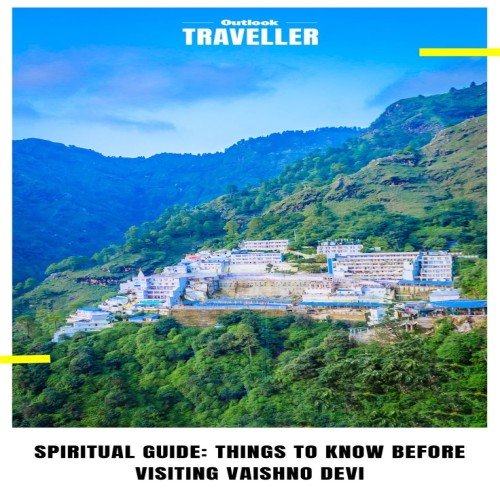Ayodhya, a city that resonates with profound cultural, historical, and religious significance, holds a special place in the hearts of millions. Nestled on the banks of the Sarayu River in Uttar Pradesh, it is best known as the birthplace of Lord Rama, the seventh incarnation of Lord Vishnu, and the setting of the great Indian epic, Ramayana. Beyond its spiritual importance, Ayodhya boasts a rich tapestry of history, architecture, and tradition.
In this blog, we will take you on a journey through Ayodhya’s timeless charm, exploring its sacred sites, stories, and the vibrant atmosphere of devotion.
The Spiritual Heart of Ayodhya: Birthplace of Lord Rama
Ayodhya’s claim to fame stems from its association with Lord Rama. The city is believed to be the exact location of his birth, and the Ram Janmabhoomi Mandir stands today as a symbol of devotion and unity for Hindus worldwide.
Ram Janmabhoomi Temple: The newly constructed Ram Temple is the most important site for pilgrims visiting Ayodhya. After years of dispute, the temple is now in full glory, drawing visitors from all corners of the country. Its architecture is a marvel, blending traditional Indian temple styles with modern grandeur.
Kanak Bhawan: This beautiful temple, dedicated to Lord Rama and Sita, is known for its golden idols of the divine couple. It’s believed that this palace-like temple was gifted to Sita by Queen Kaikeyi, and the serenity inside the temple is a must-experience.
Beyond Temples: A Dive Into History
While Ayodhya’s temples attract most visitors, the city’s history runs much deeper. It was once the capital of the Kosala Kingdom and has been referenced in ancient texts as a prosperous and vibrant city.
Hanuman Garhi: Perched atop a hill, this temple dedicated to Lord Hanuman is one of the most revered places in Ayodhya. According to legends, Hanuman lived here to protect the birthplace of Lord Rama. The temple’s architecture is magnificent, and the climb offers panoramic views of the city.
Nageshwarnath Temple: This ancient temple, believed to be built by Lord Rama’s son Kush, is dedicated to Lord Shiva. It holds a special place during the Maha Shivaratri festival and is an example of the syncretic nature of Ayodhya's religious practices.
Ayodhya’s Festivals and Fairs: A City of Celebrations
Ayodhya is synonymous with grandeur during festivals, especially those associated with Lord Rama. If you visit during any of the following festivals, you're in for a treat!
Ram Navami: Celebrating the birth of Lord Rama, Ram Navami is the most significant festival in Ayodhya. The entire city is decorated with lights, and religious processions are taken out, with thousands of devotees joining the celebrations.
Diwali: The festival of lights takes on an extra special meaning in Ayodhya, as it marks the day Lord Rama, Sita, and Lakshman returned to the city after defeating Ravana. The city lights up with millions of oil lamps, recreating the joyous homecoming.
Exploring Ayodhya’s Scenic Side: The Sarayu River
The Sarayu River, with its tranquil waters, offers a peaceful retreat after exploring the city's sacred and historical sites. Pilgrims often take a holy dip in the river, as it is believed to cleanse one's sins.
- Sarayu Ghat: This ghat is especially lively in the early mornings and evenings when pilgrims come for ritual baths, and priests perform the Ganga Aarti. The riverside is a perfect place to relax and reflect on your journey through this holy city.
Ayodhya’s Timeless Architecture and Heritage Walks
The architectural styles of Ayodhya's temples and palaces reflect the city’s long history. A heritage walk through its narrow streets offers glimpses of not just Hindu temples but also a few Buddhist, Jain, and Islamic influences that have contributed to the city’s unique identity.
- Jain Shrines: Few know that Ayodhya is also important in Jainism, as it is the birthplace of several Jain Tirthankaras, including the first, Rishabhdev. The Jain temples in Ayodhya are peaceful retreats, adorned with intricate carvings and designs.
Local Flavors: What to Eat in Ayodhya
After a day of spiritual exploration, treat yourself to some of Ayodhya’s local delicacies. The vegetarian food here is not only delicious but also prepared with deep reverence.
Aloo Poori and Kachoris: These crispy, fried delights are a favorite in Ayodhya. Many street-side vendors serve them fresh, and the accompanying chutneys add a burst of flavor.
Lassi and Sweets: After your meal, don’t miss out on a glass of chilled lassi and some traditional sweets like peda and jalebi.
Tips for Travelers: Making the Most of Your Visit
Best Time to Visit: The ideal time to visit Ayodhya is during the winter months from October to March, when the weather is pleasant. Visiting during Ram Navami or Diwali also offers an unforgettable experience.
Getting Around: Ayodhya is a compact city, and most of the major attractions are located close to each other. Hiring a cycle rickshaw or walking through the streets is a great way to explore the city.
Accommodation: There are a range of hotels, guesthouses, and dharamshalas available in Ayodhya, catering to different budgets. Many pilgrims prefer staying close to the Ram Janmabhoomi Temple for convenience.
Conclusion: Ayodhya, A City of Eternal Faith
Ayodhya is more than just a city; it is a spiritual experience, a journey into the heart of India’s ancient past and its timeless devotion. Whether you are a devout pilgrim or a curious traveler, Ayodhya will leave you with a sense of peace and reverence.






